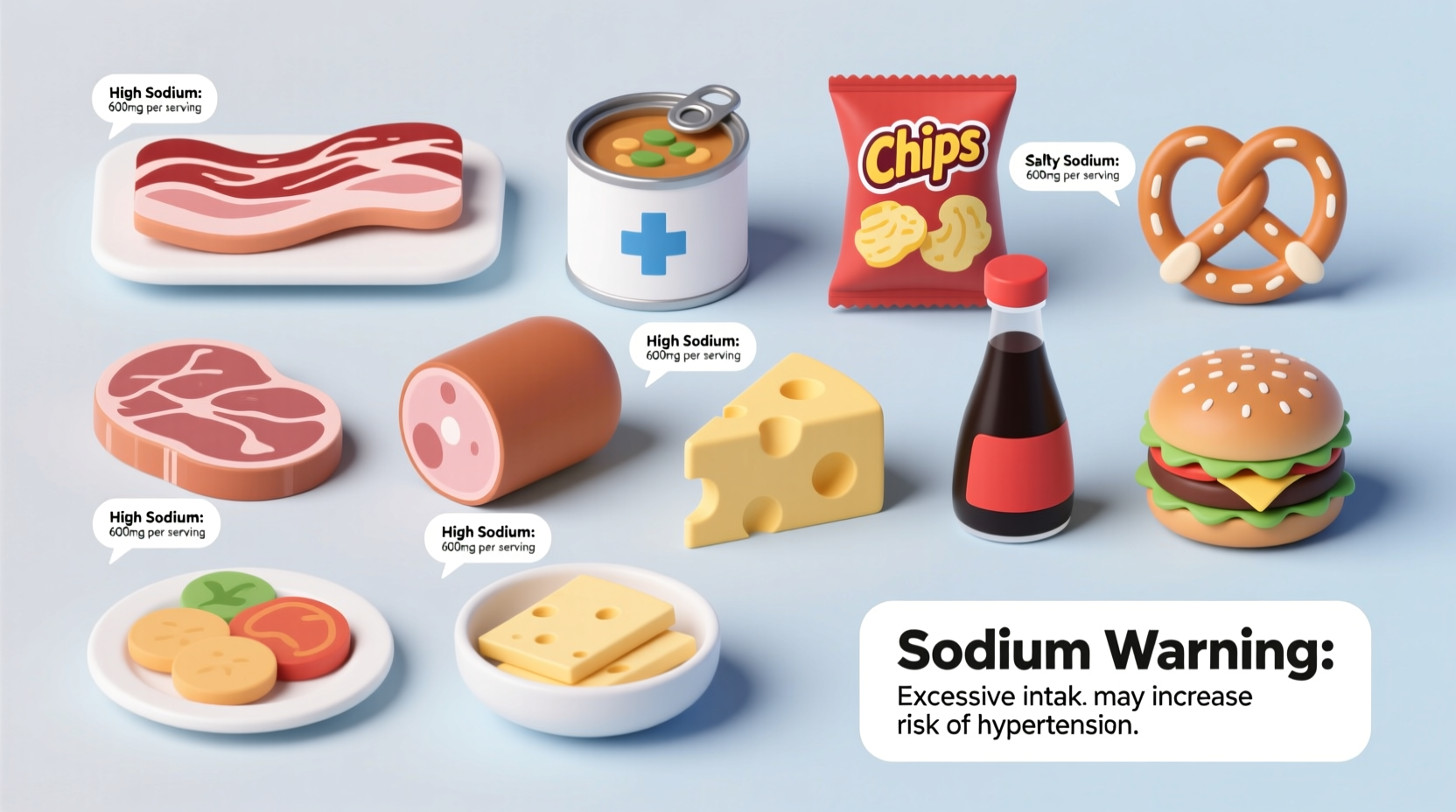Processed foods contain the highest sodium levels—cured meats, canned soups, fast food, and restaurant meals typically deliver 70-80% of Americans' daily sodium intake. Natural sodium occurs in dairy, meat, and vegetables like celery and beets, but contributes far less to overall consumption than added sodium in packaged foods.
Understanding where sodium hides in your diet is the first step toward making informed choices. While table salt comes to mind immediately, most dietary sodium comes from processed and restaurant foods—not your salt shaker. This guide reveals exactly which foods contain the most sodium, explains why it's added, and provides practical strategies for managing your intake without sacrificing flavor.
Why Sodium Matters: Beyond the Salt Shaker
Sodium serves multiple purposes in food production: it preserves freshness, enhances flavor, and improves texture. However, excessive sodium intake correlates with increased blood pressure and cardiovascular risks. The Centers for Disease Control and Prevention reports that Americans consume about 3,400 mg of sodium daily—nearly 50% more than the recommended limit of 2,300 mg.
What many don't realize is that only about 11% of dietary sodium comes from home salt use. The vast majority enters our diets through processed foods and restaurant meals before we ever get to the table.
Top 5 Sodium Sources in the Standard Diet
| Food Category | Typical Sodium per Serving | Contribution to Daily Intake |
|---|---|---|
| Processed Meats (bacon, ham, sausages) | 500-1,500 mg | 22-65% |
| Canned Soups and Vegetables | 400-1,200 mg | 17-52% |
| Fast Food Burgers and Sandwiches | 800-2,000 mg | 35-87% |
| Snack Foods (chips, crackers) | 100-300 mg per ounce | 4-13% per serving |
| Condiments and Sauces | 100-1,000 mg per tablespoon | 4-43% per serving |
This USDA FoodData Central analysis reveals how seemingly small portions of processed foods can quickly exceed recommended sodium limits. A single fast food meal often contains more sodium than you should consume in an entire day.
Surprising Sodium Sources You Might Overlook
Many foods that don't taste salty still contain significant sodium:
- Bread and baked goods—Two slices of commercial bread can contain 200-400 mg sodium
- Breakfast cereals—Especially sweetened varieties often contain added sodium
- Cheese—Processed cheese contains up to 4x more sodium than natural varieties
- "Healthy" packaged foods—Vegetable juices and plant-based meat alternatives
- Poultry—Many store-bought chicken products are injected with sodium solutions
According to the American Heart Association, bread ranks as the top contributor of sodium in the American diet simply because people consume it so frequently throughout the day.

Reading Labels Like a Pro: Spotting Hidden Sodium
Food manufacturers use over a dozen different sodium compounds beyond just salt (sodium chloride). When scanning nutrition labels, watch for:
- Sodium benzoate (preservative)
- Sodium bicarbonate (baking soda)
- Sodium nitrate/nitrite (in cured meats)
- Sodium caseinate (in dairy products)
- Monosodium glutamate (MSG)
Pay attention to serving sizes versus package sizes—many products contain multiple servings per container. A single restaurant meal might list 1,000 mg sodium per serving but contain three servings, totaling 3,000 mg.
Practical Sodium Reduction Strategies That Actually Work
Reducing sodium doesn't mean sacrificing flavor. Try these evidence-based approaches:
Cooking with Fresh Ingredients
Prepare meals from scratch using fresh meats, vegetables, and whole grains. A study published in the JAMA Internal Medicine found that people who cooked at home consumed 400-500 mg less sodium daily than those who ate out frequently.
Smart Flavor Substitutions
- Use citrus juices and zest instead of salt
- Experiment with vinegar varieties for tanginess
- Build flavor with garlic, onion, and fresh herbs
- Try potassium-based salt substitutes (consult your doctor first if you have kidney issues)
Dining Out Strategically
When eating out:
- Request sauces and dressings on the side
- Ask for dishes to be prepared without added salt
- Choose grilled proteins over fried or cured options
- Split entrees to manage portion sizes
How Long-Term Sodium Reduction Affects Your Taste Buds
Research from the National Academies of Sciences, Engineering, and Medicine shows that taste preferences adapt within 8-12 weeks of reduced sodium intake. What once tasted bland will gradually seem perfectly seasoned as your palate adjusts. This natural adaptation makes sustained sodium reduction achievable without feeling deprived.
When to Consult a Professional
If you have hypertension, kidney disease, or heart conditions, work with a registered dietitian to develop a personalized sodium management plan. They can help you navigate food labels, create balanced meal plans, and identify hidden sodium sources specific to your dietary preferences.











 浙公网安备
33010002000092号
浙公网安备
33010002000092号 浙B2-20120091-4
浙B2-20120091-4